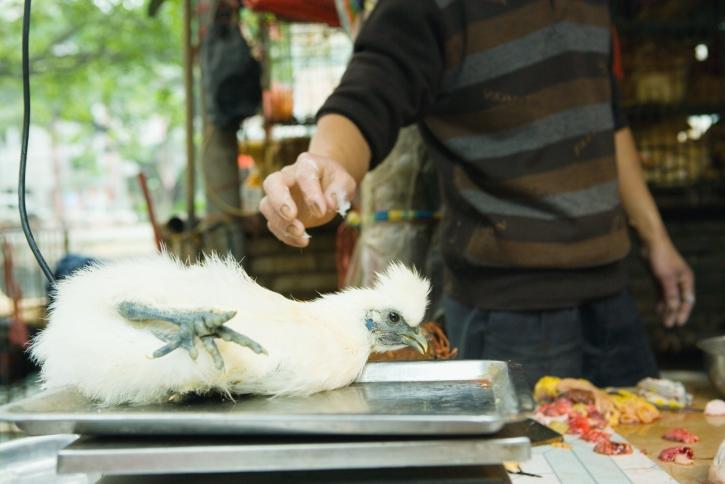Medical teams have detected H7N9 avian influenza in three more patients from China, all from eastern provinces that have reported other recent cases.
And the World Health Organization (WHO) today provided more details about five cases reported by China in recent days, which point to contact with infected poultry or exposure to their environments as the main driver of a steady stream of sporadic human infections.
Hong Kong's Centre for Health Protection (CHP), citing official notifications from the mainland, said today that the patients include two men, ages 29 and 58, from Hangzhou city in Zhejiang province. Both are hospitalized, but few other details were available. With its 62 cases reported so far, Zhejiang has the most of any province in China.
The other patient is a 50-year-old man from Fujian province, according to the CHP. He is from Quanzhou and is hospitalized in critical condition.
Today's newly reported cases boost the number of patients infected with the virus so far to 177, 52 of them fatally.
WHO adds details on recent cases
Meanwhile, the WHO report today contains information it received on Jan 11 and Jan12 on five H7N9 cases from China, all of which were recently covered over the past few days in CHP and media reports. They include two patients from Guangdong province, two from the city of Shanghai, and one from Zhejiang province.
Investigations into the sources of the illnesses found that three of the patients had been exposed to poultry, one worked near a poultry market, and one had no known exposure.
Illness onsets for the patients range from Jan 1 through Jan 6.
One of the patients, a 75-year-old woman from Zhejiang province, died of her infection on Jan 9. Among the others, three are hospitalized in critical condition: a 58-year-old woman from Shanghai, a 56-year-old man from Shanghai, and a 29-year-old man from Guangdong province. The other patient—a 76-year-old man from Guangdong province—is hospitalized in stable condition.
So far there is no evidence of sustained human-to-human transmission, the WHO said. It added that China's ongoing response activities include strengthening surveillance and situation analysis, reinforcing case management and treatment, conducting risk communication and information-release activities, strengthening international collaboration and communication, and conducing scientific studies.
Watching for second-wave pattern changes
In blog posts over the past few days Australian virologist Ian Mackay, PhD, has been poring over the ages, genders, and illness severities of the H7N9 cases reported since the end of September to see if there are any hints of pattern differences compared with the cases last spring, when the virus was first detected. Mackay is with the Australian Infectious Diseases Research Centre at the University of Queensland, and he authors the Virology Down Under blog.
In a Jan 10 post he noted that the overall proportion of fatal H7N9 cases was around 30%, but of the cases reported since fall, only 9.1% have died. He noted that it's unlikely that the virus has changed, and the lower fatality rate could be the result of improved case management or more patients recovering and being discharged.
Mackay notes, however, that many of the patients could still be in intensive care and that another possibility could be that China is releasing fewer details about deaths and discharges.
His analysis of gender distribution, detailed in a Jan 11 post, says male cases still predominate, but in recent weeks females are equally represented among the numbers. "While the case numbers are still low this still begs the question, as does the cause of the apparent start of the H7N9 season, what is driving these patterns?" Mackay wrote.
When looking at age patterns, the median since the end of September is 54 years, compared with 59 years for all H7N9 cases reported in the outbreak, he wrote in a blog post today. Mackay added that it's not clear if the median age is significantly lower in the second wave or if the pattern is evening out as the year progresses.
Mackay wrote that patients age 20 or younger have not shown up yet in the flurry of new cases and that a younger-than-age-60 demographic pattern has been predominating since December, as it did in the H7N9 outbreak's early months.
See also:
Jan 14 CHP statement
Jan 14 WHO statement
Virology Down Under blog




















